
Background
Valor Threat Protection (Valor) is the first course evaluated by LETnEC. Jamie Gissel, owner and operator of Valor volunteered to be a part of the validation process for this program and I am personally grateful for the opportunity. Not only does LETnEC need to validate these rubrics before they become the standard for the program, but they need to stress testing against good classes to make sure they are measuring what needs measuring.
Valor’s “Lone Protector – Solo Active Shooter Response” course is one of those courses that the rubric was designed to measure against. The course not only scored in most categories, it showed glaringly the holes in the rubric as it was originally designed. For an explanation on the rubric design and the redesign it went through, go here for the story and the rubrics we worked on.
I was a deputy sheriff for 10 years and, during that time, we had one active shooter in a school “training” event. We arrived at the school, were put into groups, and we cleared the school in a diamond formation, which was how most people were being trained post-Columbine. At the end of the training, we were told what we did wrong, slapped on the back, and that was it.
As most training is created today, this is also most people’s experience, especially with scenario-based training.
Valor’s Lone Protector course is definitely not this.
Jamie is currently in the training team of Mesa, AZ, Police Department’s Academy, after 16 years on Mesa’s SWAT team. He partner’s for this course with Mike Campofernando of Grayman Defense Consulting, for this class. Mike is also with Mesa PD and has been on the SWAT team for 13 years, eight of which as a sniper.
Why would you want to take this course? From the ground up, it was designed to improve your skills, not just to take your money, check a box, and send you back into the world. The concept for this course came from Jamie and Mike attending the NTOA 2023 national conference in Aurora, CO. After multiple after-action reports and hearing regularly that “patrol just needs to be better” while no one was talking about how to make that happen, they sat down together and planned the course. They specifically focused on a course for patrol, SROs, and small agencies who do not have the luxury of less than a couple of minutes of response times form other officers and SWAT teams in route.
The course experience
This course is designed to take anyone from their skill level to a level of confidence in removing the threat. It is not just a tactics class, it is a decision making and quick response class with immediately applicable information and newly developed skills.
The high-speed SWAT operator who also works patrol will have their skills and tactics tested. The officer with no tactical training will learn how to stop a threat as safely as possible. Overall, this course is excellent.
While there are many former SWAT members teaching courses on CQB and active shooter response (of which I will be attending), this is the first course in years that I have attended where the research and analysis was plain, lessons learned were applied, and a challenge to the “stage and wait” idea of post-Columbine and pre-Uvalde events. The only classroom time was spent productively going through and discussing the Uvalde, TX, event in comparison to the Nashville, TN, event with video I’ve never seen before and detail I have never heard. A full-history, supporting data, and the events that lead to where we are in active shooter response was presented with no politics or opinions. I especially liked how they reinforced the idea of “Safety Priorities” and engrained it through practice and review throughout the course and in scenarios. The “Why?”, “Why this?”, and “Why this, this way?” was very clear throughout the presentation and class.
Everything discussed and demonstrated was based on research, observation, and analysis. One thing I look for when evaluating is how much of the course is based on personal experience and comes in the form of war stories. In this class, almost no war stories are told and the personal experience related to the course content was directly relevant and identified from multiple cases of application. It truly felt that this course is not just theory and good idea fairy dust – it was real data, real analysis, from real events, put into context by real experience, practice, breaking, and testing.
We spend maybe 1.5-2 hours in the classroom. That’s it. The rest of the time is running through scenarios. One thing that was very clear in an ad hoc poll I made on what people look for in training is the concept of “crawl, walk, run.” Essentially, go from simple to complex, from concrete to abstract, with the goal being independent decision making and action. Again, this is the class that does all of this.
We started with a tape building where Jamie and Mike gave individualized and regular feedback as we practiced. Then the simple movements in a hall of rooms, then against paper targets, all of it culminating with multiple people, cross-fire possibilities, multiple shooters and casualties scattered around.
Every scenario was ended with 1:1 feedback where the instructors would listen to your report on the event and, correctly using Socratic methods, would lead people to see their decision making or skill errors. No criticism, no mockery, all solid and direct feedback. They also take into account the growth they see from the beginning to the end. They consider the experience of the person – if you are SWAT responding, your feedback will be more direct and granular compared to a new School Resource Officer with no tactical training.
By the end of the two days, we were hot, tired, and happy. Two-10 hour days of constantly running scenarios – moving, shooting, and decision making in a school that they were able to use for our training.
Most of the missed points I found with the course are things that will be a common issue among most law enforcement trained instructors – a lack of documentation. One thing I love about LE instructors is how much they get right intuitively with the less than acceptable training most receive, if any, on being instructors and creating training. It was because of this gap, that I had to redesign the rubric – the course was well designed using a lot fo learning science Jamie and Mike were unaware of, but the issues of documentation dragged the score down. A well designed course should not suffer a lack of documentation due to a lack of proper prior training.
As with all scenario-based training, there was some downtime. While I believe this was mitigated as well as possible by keeping the scenarios realistically within about 3-5 minutes each, with two instructors running scenarios back-to-back, it is still about 20 minutes of down time between runs per participant. Jamie and I have discussed some things they can add to the course that can reduce the feeling of downtime, but one thing they did that I liked was they left the tape building in place where we staged prior to our running a scenario. Most of the participants used this to practice, reducing the feeling of waiting around.
I fully intend on taking this course again. If you are not aware of the standards for the evaluation, every course publicly reviewed was paid for out of my own pocket. So, yes, I would gladly pay for this course again. At $550-600 for a two-day class, I know that I would learn more than I did in the first course and it would be money well spent.
The scores
Final score for the evaluation was:
- Documentation: Raw score – 260 out of 362 = 72% or 3.6 stars, rounded to 3.5
- Design: Raw score – 457 out of 467 = 98% or 4.9 stars, rounded to 5
- Jamie Gissel – Instructor: Raw score – 249 out of 249 = 100% or 5 stars
- Mike Campofernando – Instructor: Raw score – 244 out of 249 = 98% or 4.9 stars, rounded to 5
NOTE: 5.0 stars doesn’t represent perfection, it represents professionalism. No real instructor believes they are a perfect instructor, but they may demonstrate all of the basic-advanced skills and knowledge of what should be expected from an instructor. More detail and the criteria about what the stars represents can be found on the page discussing The Rubrics.
The Rubrics
Valor’s Response
As an instructor, I believe the only way to improve is through honest critique, especially from someone outside your circle who isn’t afraid to point out blind spots. When Rick Jacobs put out the call for courses to be evaluated through LETnEC’s new Training Evaluation Program, I knew I needed to do it. I didn’t ask Rick what he would be critiquing because I wanted truly honest feedback without any influence on how I delivered the class.
What stood out immediately was how detailed Rick’s evaluation was. His rubric was incredibly thought out and covered way more than I expected. It wasn’t a surface-level scorecard, it was a comprehensive analysis that exposed strengths, highlighted growth areas, and even reshaped how I think about documentation and course structure.
What I appreciated most is that Rick didn’t just show up to hand out a score. He put himself fully into the role of a student, running the drills, making mistakes, learning, and growing right alongside everyone else. That willingness to engage as a student made the evaluation not only more credible but also more valuable.
After wrapping up the Lone Protector course, Rick and I sat down together and dug into his rubric. I appreciated his honest feedback on the original version of his rubric, and I was willing to make the changes he pointed out in order to make my course better. There were definite areas I could improve, and he helped me see things I had never thought about before. Just as importantly, I respected his humility in recognizing there were flaws in his evaluation design and being open to refining it. From my side, it was a huge learning opportunity. It wasn’t just about figuring out how to score higher next time, it was about understanding the legal, liability, and educational importance of proper documentation in law enforcement training. Rick’s expertise in course design was invaluable; coming from the police world, he showed me things I had honestly never considered before.
I walked away from the process with clear changes I’ll be making to future courses: tightening up documentation, integrating better supporting materials, and ensuring my course packages meet professional instructional standards just as much as they meet tactical standards. That guidance has given me a roadmap to make an already strong course even stronger.
In the end, I’m genuinely grateful for the experience. The final scores reflected exactly what I hoped for, a course that’s strong in design and instruction, with documentation as the area to grow. More importantly, it proved once again to me that real improvement only comes through honest critique. Rick’s evaluation gave me the tools to elevate the Lone Protector even further. I’m proud that my course played a role in shaping LETnEC’s rubric, and I know the officers who attend in the future will benefit directly from the improvements this process inspired.
If you’re serious about becoming a better instructor and putting out the best possible product, you need to be willing to have LETnEC give you an honest evaluation. It will make you better as an instructor, it will make your course better for the people you teach, and it will help raise the standard for law enforcement training across the board.



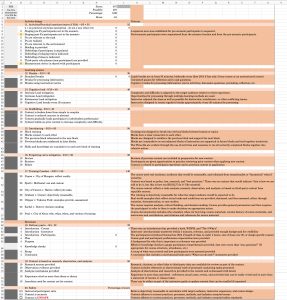
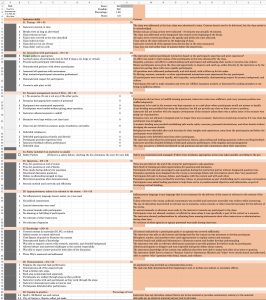
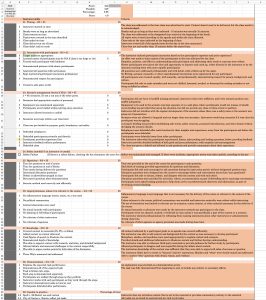
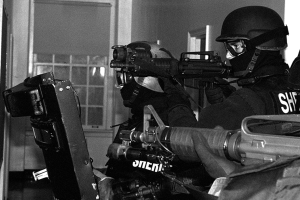
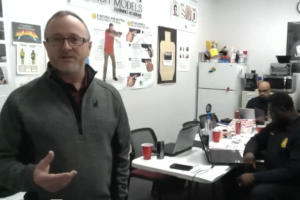
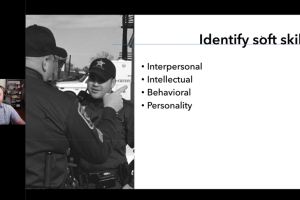
Leave a Reply
Your email is safe with us.
You must be logged in to post a comment.